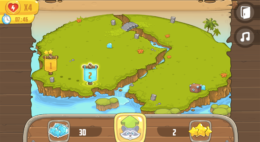
What is fair use?
What is fair use?
Fair use allows you to reuse copyright-protected material under certain circumstances without getting permission from the copyright owner.
Fair use is an exception to copyright law and is not determined by YouTube. YouTube does not decide what is fair use and what isn’t. Only the court can do that.
What counts as fair use?
Different countries have different rules about when it’s OK to use material without the copyright owner’s permission.
In some countries, it’s not even called fair use. For example, in the UK it’s referred to as fair dealing.
Aside from what your country calls it, courts usually focus on whether your use of another person’s song or video is transformative.
Basically, they’re asking if you added new expression or meaning to the original work or if it basically copies the original.
For example, in the US, content that might be considered fair use includes commentary, criticism or news reporting.
Also, keep in mind that just because you say something’s fair use, give credit to the copyright owner or add a disclaimer like ‘No infringement intended’, it does not mean that you’re protected.
How is fair use determined by law?
Determining fair use is never a cut-and-dried process.
In the US, fair use can only be determined in court by a judge.
The judge will look at your case overall based on a few different factors.
Here are a few things to keep in mind based on what the courts look at.
You’re less likely to qualify for fair use if your video merely copies someone else’s and adds nothing else
if you’re trying to monetise your video
if you’re using fictional copyrighted material rather than factual material
if you borrowed a large amount of material rather than a small portion
if the main focus of your video is the copyright-protected material
or if your use of the material harms the copyright owner’s ability to profit from their original work.
So, all of these are helpful factors to consider when thinking about fair use.
But also keep in mind there’s no guarantee that you’ll qualify for fair use just because you take these factors into account.
For example, just because you don’t monetise your video or if you only use a small portion of the copyrighted material that does not mean you automatically qualify for fair use.
Again, the courts look at everything holistically and there’s always a risk involved when using someone else’s copyrighted work.
Think carefully about all of these factors and get legal advice if needed.
Companies are claiming just a few seconds of a video.
How is that not abuse?
One of the biggest myths about fair use is that there’s a minimum amount of time you’re allowed to use someone else’s copyrighted work.
But despite what some people may think there is no duration for which you can use someone else’s content that is automatically protected under fair use.
In fact, courts have rejected fair use arguments for songs that only sample a few seconds of someone else’s work.
So, if you’re using any amount of content that you don’t own even a few seconds you’re taking a risk of receiving a claim or a takedown.
You have the right to argue fair use but only courts, not YouTube, can ultimately decide whether the use of someone else’s content is protected under fair use.
Because of this our approach has been to empower creators to remove claimed content whenever possible if they feel that it isn’t adding significant value to their video.
That’s why we’ve built tools to help you easily identify the content being claimed in your video and remove or swap out claimed music with copyright-safe tracks from the free YouTube Audio Library.
We’re also now requiring claimants to add timestamps to these claims so you know exactly which piece of your video is being claimed.
We’ve also updated our editing tools so that when you manually remove the content claimed in your video
the claim is automatically released, restoring monetisation to your video if you were previously monetising.
Why does my content which is clearly fair use keep getting claimed by Content ID?
Automated systems like Content ID can’t determine fair use which is a subjective, case-by-case decision that can only be made by a court.
While YouTube can’t arbitrate fair use disputes and automated systems like Content ID can’t account for fair use, this doesn’t mean that fair use can’t exist on YouTube.
If you’re a creator you should avoid relying on fair use unless you understand how the rules work and you’re prepared to defend your position through the Content ID dispute process and potentially the counternotification process.
This forces the claimant to withdraw or to file a lawsuit.
This isn’t a decision that should be taken lightly or without legal advice.
But it is the most powerful step you can take if you want to pursue a fair use defence and will force the most thoughtful review from the claimant.
And that’s it for fair use.